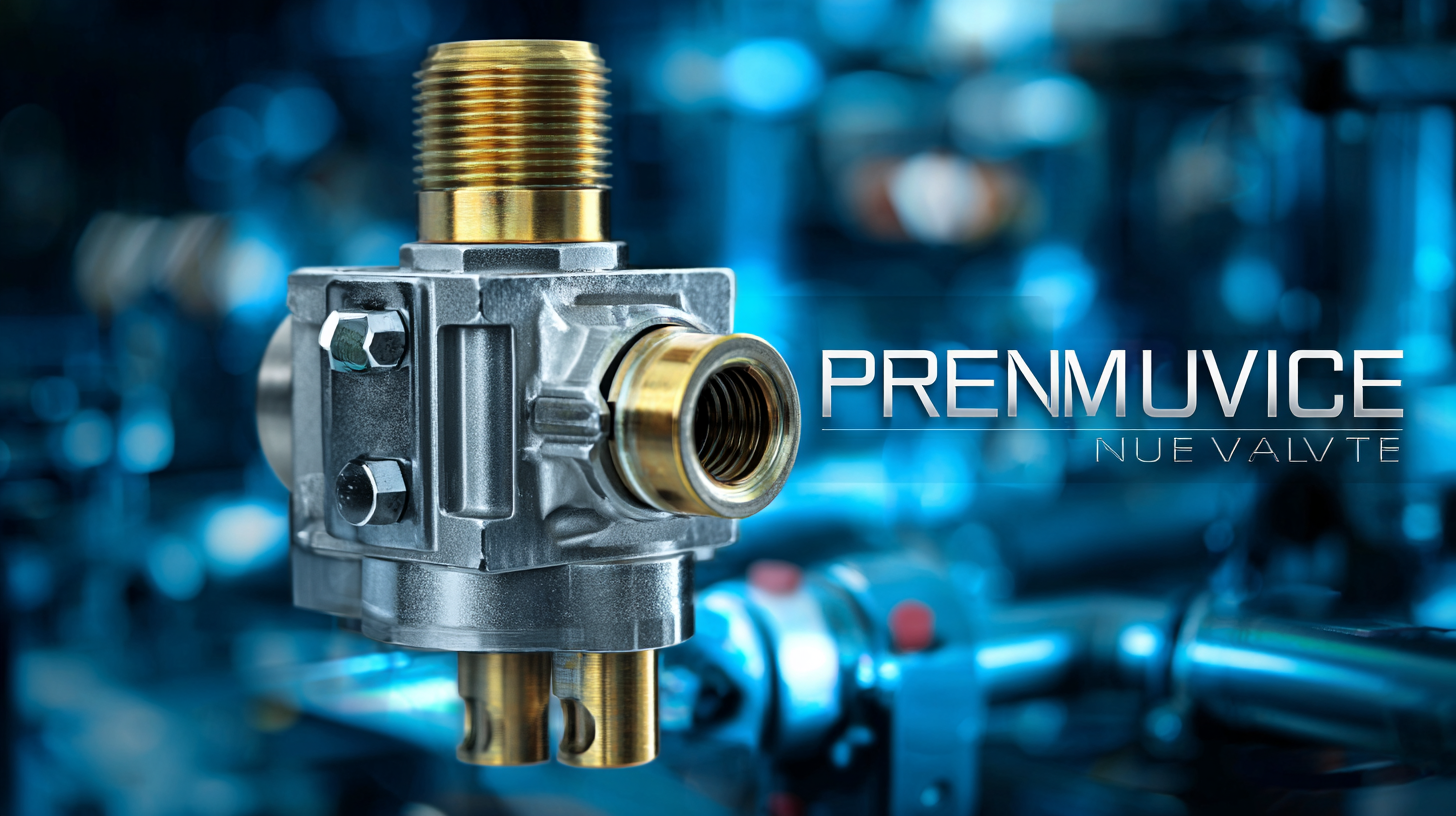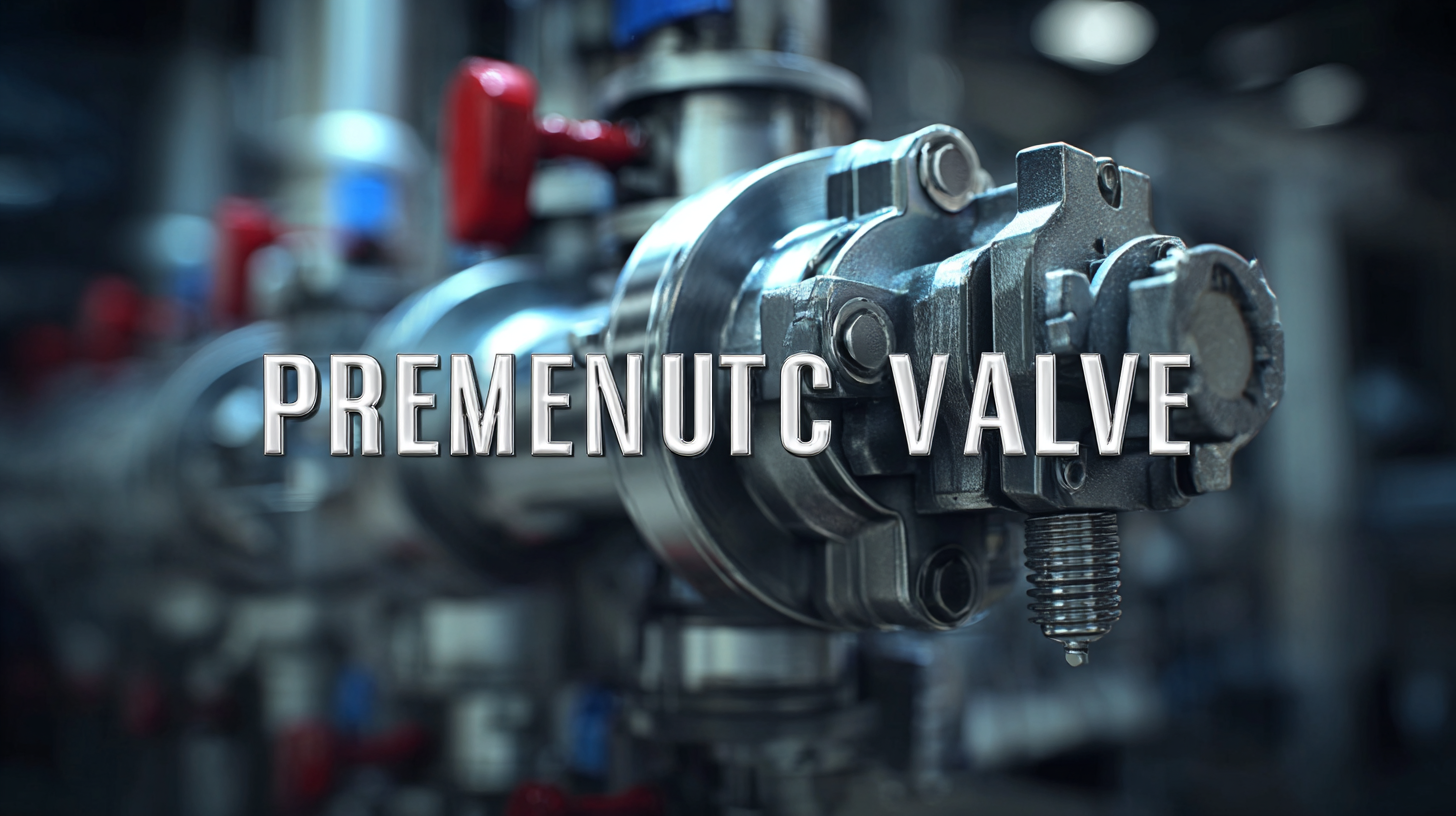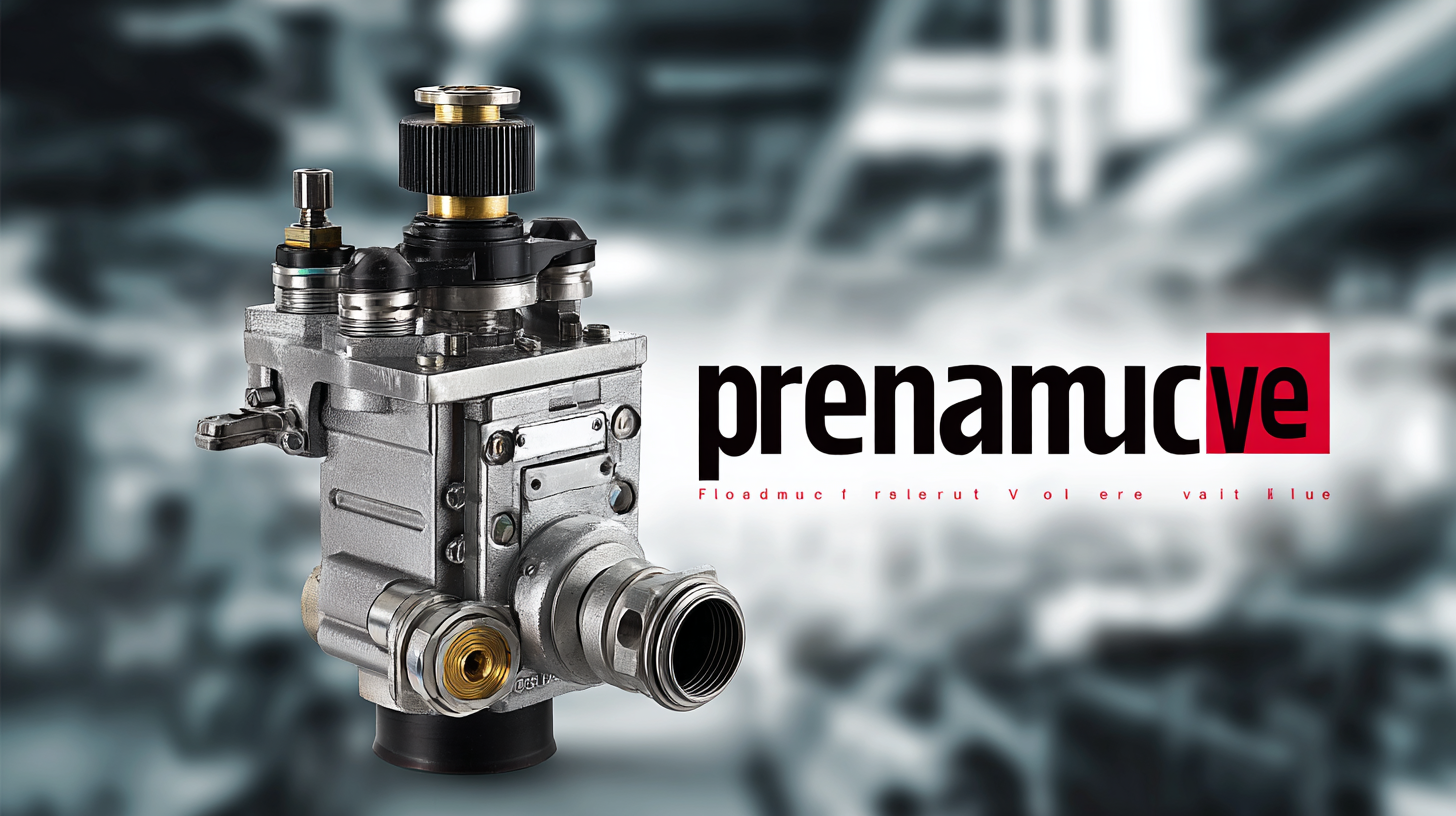Top Strategies for Sourcing the Best Pneumatic Valve for Efficient Industrial Operations
In the fast-paced world of industrial operations, the efficiency of processes hinges significantly on the quality of components used, particularly pneumatic valves. According to a recent report by MarketsandMarkets, the global pneumatic valves market is projected to reach USD 3.07 billion by 2026, growing at a CAGR of 5.8% from 2021. This growth underscores the critical role pneumatic valves play in automation and control systems across various sectors, including manufacturing, chemical processing, and food and beverage industries. Selecting the right pneumatic valve is essential not only for optimizing performance but also for ensuring operational reliability and compliance with safety standards. This blog will explore key strategies for sourcing the best pneumatic valves, enabling industries to enhance their operational efficiency and achieve sustainable growth in an increasingly competitive landscape.
Understanding Pneumatic Valves: Types and Functions for Optimal Performance
Pneumatic valves play a crucial role in the efficiency of various industrial operations, with their design and functionality significantly impacting overall performance. Understanding the different types of pneumatic valves is essential to selecting the right one for specific applications. Common types include solenoid valves, which are electrically actuated and ideal for rapid response times, and rotary actuated valves, which allow for precise control in systems where airflow direction needs to be manipulated. Each type serves distinct purposes, from regulating airflow to managing pressure, making the choice dependent on the operational requirements.
In addition to identifying the types, it is vital to comprehend their functions. For instance, shut-off valves prevent backflow and ensure safety, while proportional valves modulate flow rates, allowing for fine-tuning of processes. The right valve not only enhances productivity but also minimizes downtime, leading to more efficient industrial operations. By understanding the specific needs of your system and the functions of these valves, you can better source the best pneumatic valve that aligns with your operational goals and improves overall efficiency.
Top Strategies for Sourcing the Best Pneumatic Valve for Efficient Industrial Operations
| Valve Type |
Function |
Material |
Pressure Rating |
Typical Applications |
| Ball Valve |
On/Off control |
Brass |
up to 150 psi |
Water, Air, Gas systems |
| Gate Valve |
Full flow control |
Stainless Steel |
up to 1500 psi |
Oil and Gas, Waterworks |
| Globe Valve |
Flow regulation |
Cast Iron |
up to 600 psi |
Heating, Ventilation |
| Check Valve |
Prevent backflow |
PVC |
up to 30 psi |
Pumping systems, Water treatment |
| Solenoid Valve |
Automatic control |
Aluminum |
up to 80 psi |
Computer-controlled systems |
Key Factors to Consider When Sourcing Pneumatic Valves for Your Industry
 When sourcing pneumatic valves for industrial applications, several key factors must be considered to ensure optimal efficiency and performance. One pivotal element is the valve's performance specifications, including its flow rate, pressure range, and response time. According to a recent report by MarketsandMarkets, the global pneumatic valve market is expected to reach $7.58 billion by 2026, reflecting the increasing demand for precise control and automation in various industries. Selecting a valve that matches the specific operational requirements of your facility can lead to improved productivity and reduced downtime.
When sourcing pneumatic valves for industrial applications, several key factors must be considered to ensure optimal efficiency and performance. One pivotal element is the valve's performance specifications, including its flow rate, pressure range, and response time. According to a recent report by MarketsandMarkets, the global pneumatic valve market is expected to reach $7.58 billion by 2026, reflecting the increasing demand for precise control and automation in various industries. Selecting a valve that matches the specific operational requirements of your facility can lead to improved productivity and reduced downtime.
Another important consideration is the material compatibility of the pneumatic valve with the fluids it will handle. Industries such as food and beverage, pharmaceuticals, and chemicals require valves made from specialized materials to resist corrosion and contamination. A study published in the Journal of Advanced Manufacturing Technology reveals that improper material selection can lead to significant operational failures, costing businesses up to 15% of their annual revenues. Therefore, evaluating the operating environment and chemical properties of the substances is crucial in determining the suitable valve material, ensuring longevity and reliability in demanding industrial settings.
Evaluating Quality and Reliability: How to Choose Durable Pneumatic Valves
When selecting pneumatic valves for industrial applications, the evaluation of quality and reliability is crucial. According to a report by MarketsandMarkets, the global pneumatic valve market is projected to reach $9.3 billion by 2025, driven by the increasing demand for automation across various sectors. This significant growth underscores the need for operators to choose high-quality pneumatic valves that can withstand rigorous operational conditions while maintaining performance efficiency.
Durability is a key consideration in this selection process. A study from the Institute of Mechanical Engineers indicates that pneumatic systems can suffer a 15% drop in performance due to valve failures, leading to costly downtime and maintenance. Thus, it is essential to assess materials used in valve construction, such as corrosion-resistant alloys and robust seals, which enhance longevity and reliability. Additionally, manufacturers should provide detailed testing and certification data to ensure that their products meet industry standards, such as ISO 9001. By prioritizing these factors, companies can optimize their industrial operations and mitigate risks associated with valve performance variability.
Evaluation of Pneumatic Valve Quality Indicators
Cost-Effective Strategies for Procuring Pneumatic Valves Without Compromising Quality
In today's industrial landscape, sourcing pneumatic valves efficiently while balancing cost and quality is more essential than ever. Emphasizing strategic procurement techniques can lead to significant savings without compromising on the necessary performance standards. By leveraging data analytics and artificial intelligence, businesses can refine their sourcing processes, allowing for smarter decision-making that aligns with overall operational goals.
Additionally, fostering strong partnerships with suppliers enhances supply chain management, ensuring that companies can acquire high-quality valves at competitive prices. As industries adapt to rapidly evolving demands, innovative procurement strategies become crucial. Implementing a data-driven approach not only optimizes costs but also enhances operational efficiency, making it possible to achieve both immediate and long-term objectives in industrial operations.
Leveraging Technology and Innovation in Sourcing Pneumatic Valves Efficiently
In today’s fast-paced industrial landscape, leveraging technology and innovation is paramount in sourcing high-quality pneumatic valves. The pneumatic valve market is expected to reach USD 9.7 billion by 2025, growing at a compound annual growth rate (CAGR) of 5.3% from 2020 to 2025, according to a report by MarketsandMarkets. This growth indicates the increasing demand for automation and efficiency in various sectors, including manufacturing and oil & gas. Integrating advanced sourcing technologies can streamline procurement processes, reduce lead times, and enhance the overall operational efficiency.
One of the key strategies to utilize technology in sourcing pneumatic valves effectively is through data analytics. By analyzing historical performance data and supplier metrics, companies can better identify the most reliable vendors and products that meet their operational needs. Furthermore, employing digital platforms and e-procurement solutions allows for real-time inventory management, ensuring that businesses maintain optimal stock levels of pneumatic valves. Reports suggest that organizations that adopt such technologies can reduce procurement costs by up to 20%, ultimately driving efficiency and profitability in industrial operations. By prioritizing innovation in their sourcing strategies, companies can gain a competitive edge in the evolving market landscape.
 © Copyright 2020 Tianjin Tanghaidongyang Valve Co., Ltd. All Rights Reserved.
© Copyright 2020 Tianjin Tanghaidongyang Valve Co., Ltd. All Rights Reserved.

 When sourcing
When sourcing 

